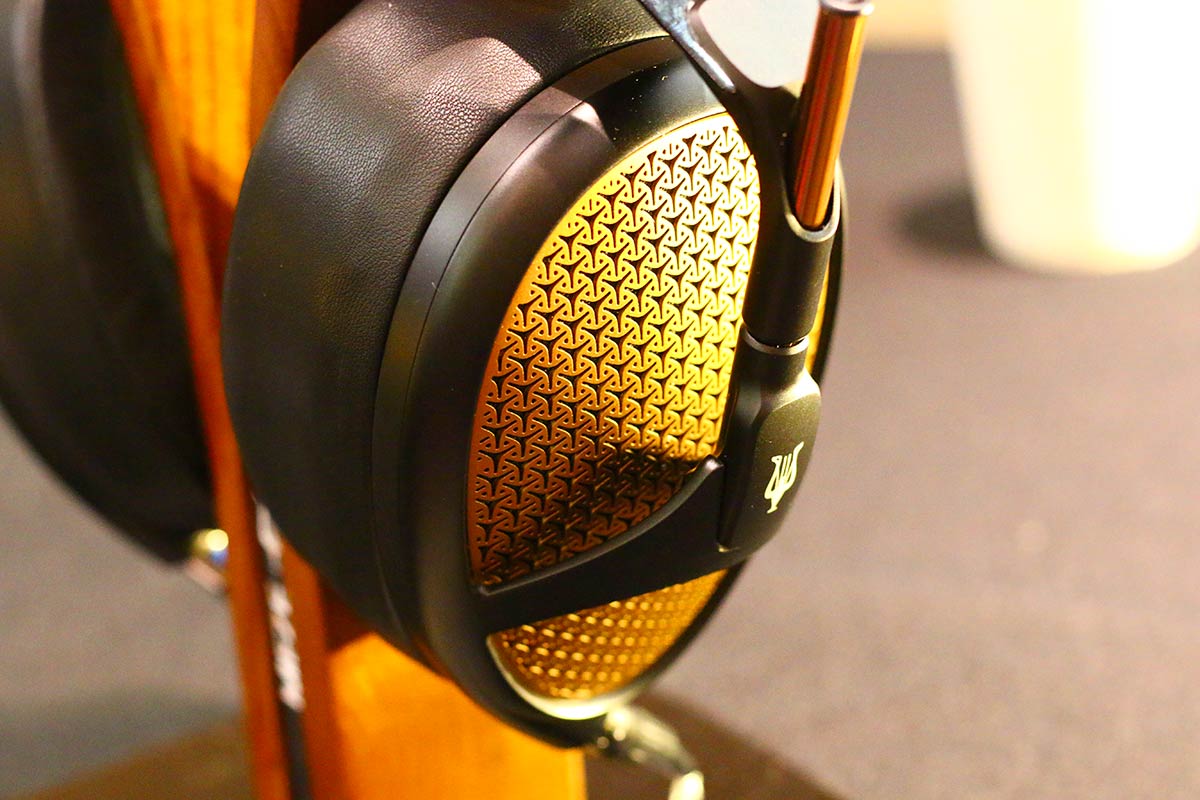
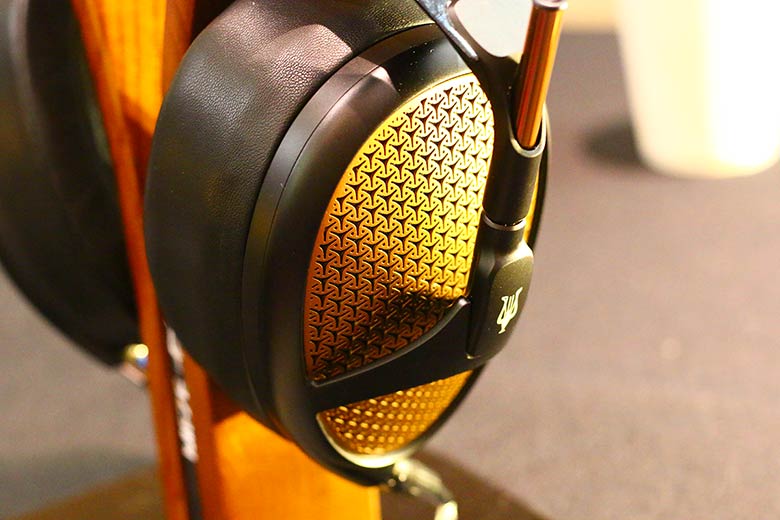
The Master Switch


The Master Switch
It's very easy to get a decent pair of headphones. For a few hundred bucks or less, you can score yourself a very classy pair. But sometimes, you just need to cut loose. Sometimes, you just need to break the bank, go deep, and invest in something that will last you that years, and deliver the best sound you've ever heard. That's what we're going to do, right here. Whether your budget is $5,000 or $500, we're going to present the absolute pick of the best audiophile cans available. Note that we haven't included pricy electrostatic headphones, which are getting their own list, and we've also combined over-ear and in-ear models. To complete your system, check out our lists of the best DACs and best headphone amps.
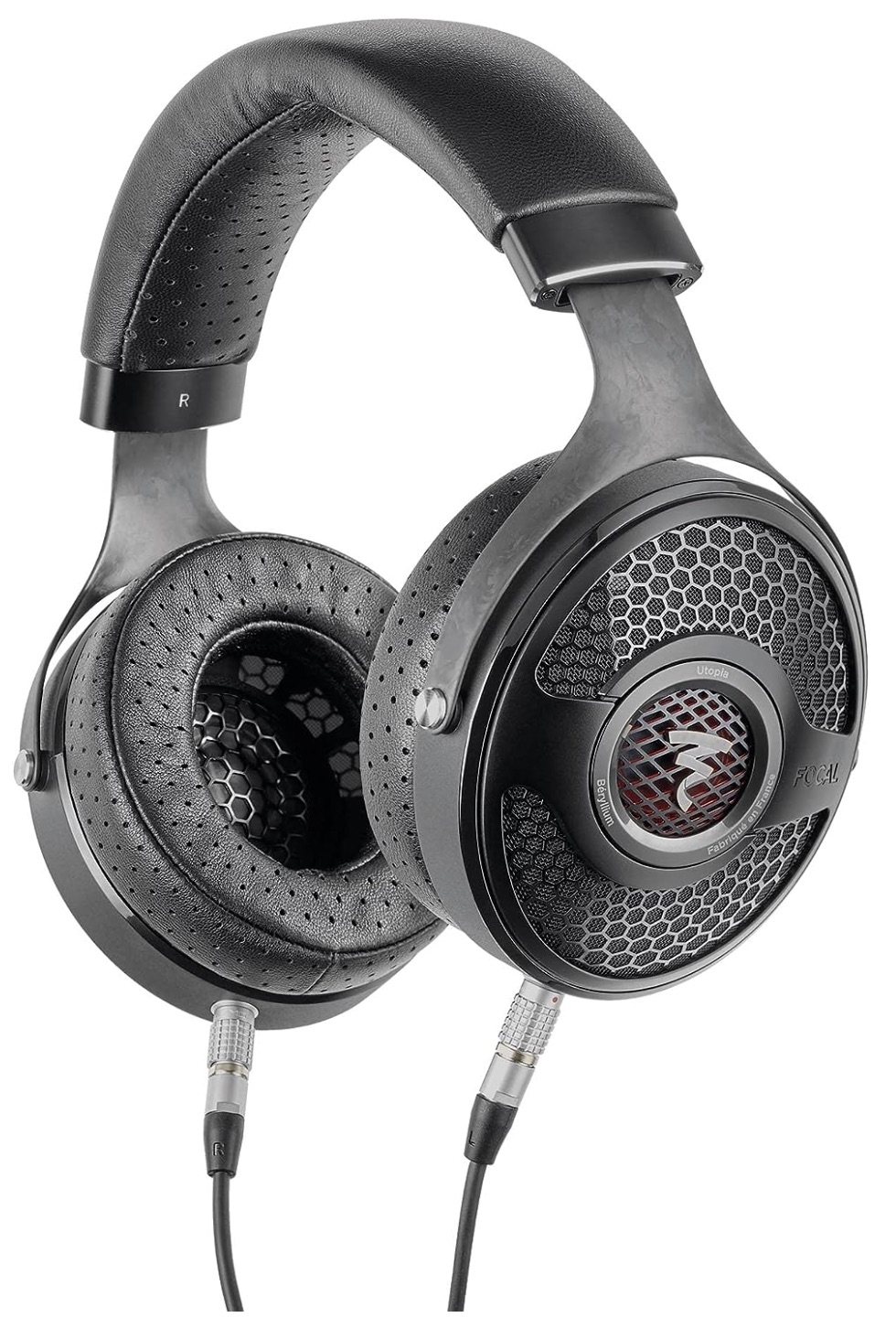 Category: Dynamic / Open-Back
Category: Dynamic / Open-Back
Impedance: 80Ω
Sensitivity: 104dB
What We Like: Ultimate sound for discerning audiophiles.
What We Don’t: Ultimate price tag, “interesting” looks.
If you can afford them, the Focal Utopia offer the best sound of any headphones ever. You can fight us in the comments if you disagree. In our full review, we said, "There's only one conclusion here, and that's that you should buy these immediately, if you can afford to. They are the single easiest Editor's Choice award we've ever given out." Simply put, these are the best high-end headphones on the planet in 2023 and should make even the most discerning audiophiles happy.
There's good reason for the enthusiasm, as the sound of the Utopia is open and rich. It also helps that they have a reasonably high sensitivity, meaning they can be driven by a variety of amps. Despite the sci-fi looks, there's absolutely no doubt in our minds that these are the best high-fidelity cans on the market right now. They offer better clarity than the Meze Audio Elite below, better comfort than the Abyss Diana Phi, better overall sound quality than every single pair of cans on this list, and they have virtually no flaws to speak of. If open-back isn't your thing, Focal have a newer, closed-back pair of headphones called the Stellia that are equally excellent. We don't think they knock the Utopia, but they rock, and are more than worth it if you are looking for a closed alternative. But for the foreseeable future, the Utopia remain a superb, classic choice.
See the Focal Utopia
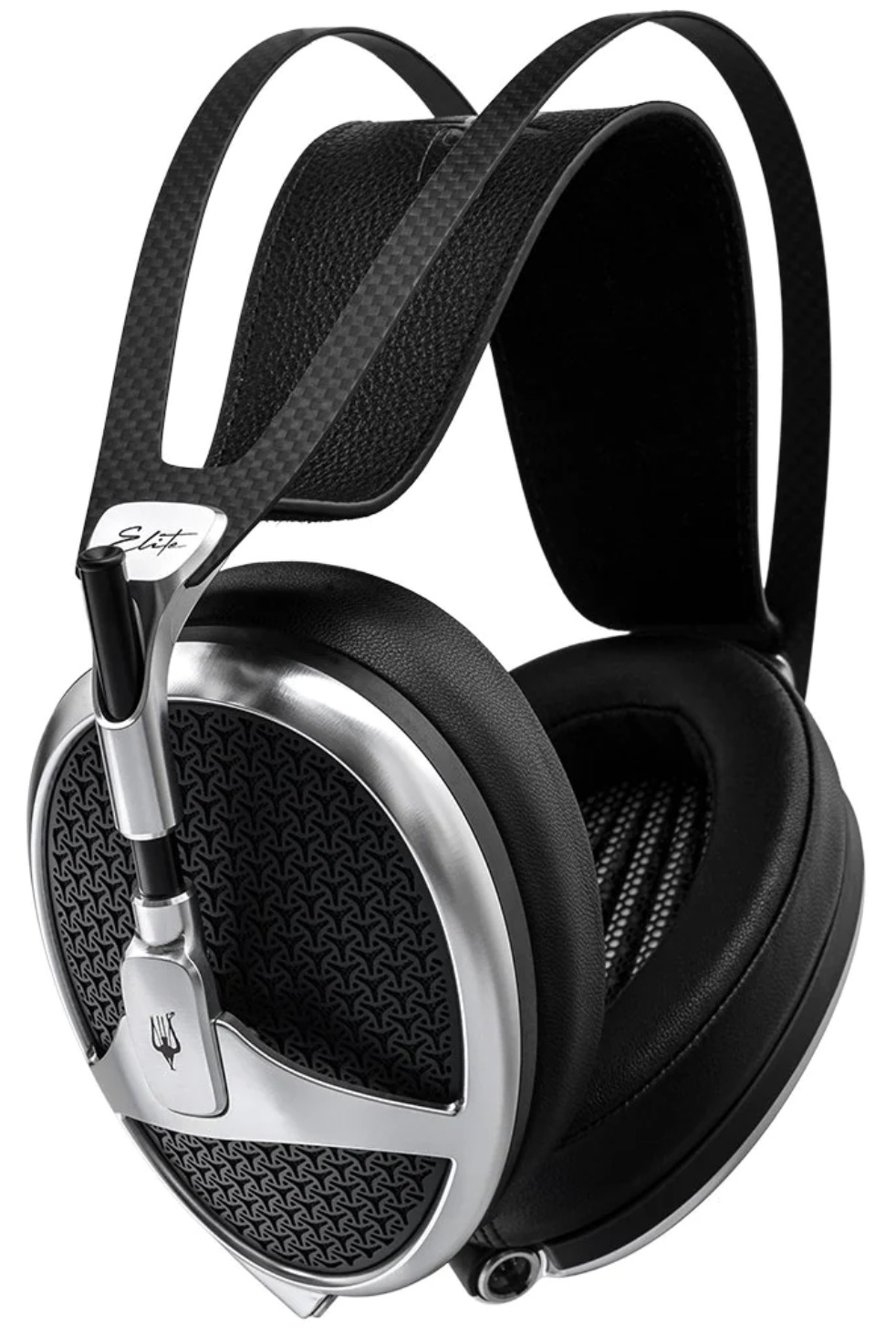 Category: Hybrid / Open-Back
Category: Hybrid / Open-Back
Impedance: 31.6Ω
Sensitivity: 100dB
What We Like: Rich, powerful audio quality, supremely comfortable.
What We Don't: Looks may be an acquired taste.
How does one describe the Meze Audio Elite? When putting this article together, we wrote and rewrote this paragraph multiple times, because the Elite almost defy description. They use isodynamic hybrid array drivers to create sound that manages to be exacting and detailed, and incredibly warm and engaging. The fact that the Elite headphones are around $1,000 less expensive than the previous crown-holder on this list, the Focal Utopia, is just astounding. The Utopia headphones offer incredible, pinpoint sound, and remain one of the best headphones ever made, but the Elite won our ears, and our hearts based on value.
Compared to the older Meze Empyreans, the Elite offer better isolation and soundstage, which is a tall task. It’s true that these headphones may be overkill for those on a budget, and the aesthetic is slightly unusual (at the least, it’s an acquired taste). In addition, you will want to match the Elite with a good amp and DAC to really maximize their potential. But their unbelievable audio quality, ridiculous detail, and supreme comfort make them a winner. We defy anyone not to grin like a loon while listening.
See the Meze Audio Elite
Category: Dynamic / Closed-Back
Impedance: 300Ω
Sensitivity: Unavailable
What We Like: Outstanding audio quality in a truly luxurious design.
What We Don't: There'll be a long waiting period to get your headphones.
Zach Mehrbach is a magician. Really, that’s not too strong a word. His company ZMF headphones produces some of the most astounding and beautiful headphones on the planet, and we think the new Vérité Closed is one of the best he’s ever made. Closed-back headphones are tricky to get right, and can sound boxed-in and unrealistic. But the Vérité Closed nail it, with bright highs and upper mids that sound tremendously exciting. There are very few closed-back cans on our list, and most of them could be considered budget options, like the Meze Audio 99 Classics. The Vérité Closed are a shining, brilliant exception.
It also helps that these headphones look amazing. You can choose from a variety of woods for the housing—our favorite is purpleheart. However, this also reveals the biggest downside of these headphones. Because each pair is handmade, it often can take a long time before you get yours. And ZMF are ridiculously popular, adding to the long lead times. On their website, ZMF says that they try to build up a stockpile, but you can expect two to six weeks for your headphones or possibly longer, plus you have to pay in full in advance. Your correspondent owns a pair of their cans (paid for with his own money, for personal use) and they took around three months to arrive. If you can wait, however, you’ll find yourself with one of the best closed-back headphones ever made.
See the ZMF Vérité Closed
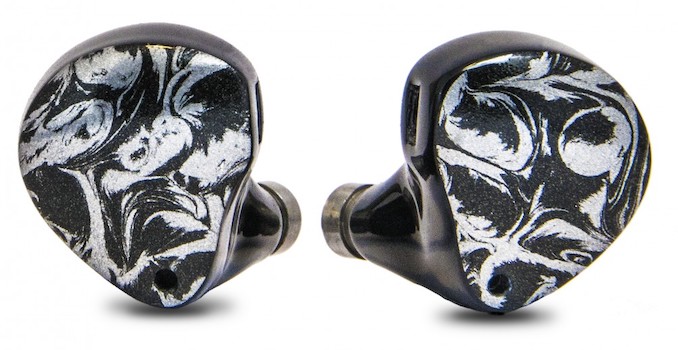 Category: Multiple Driver Type / In-Ear
Category: Multiple Driver Type / In-Ear
Impedance: Unavailable
Sensitivity: Unavailable
What We Like: Stupendous, rich sound.
What We Don't: Lack of specs is still a problem.
Noble Audio's Khan, a reworking of their fabled Katana in-ears, are a winner. When we first heard these, they knocked just about every other pair of in-ears out of the park. They deliver an excellent balance of deep, thunderous bass and crisp highs, with the level of definition and clarity that is truly astounding. For the time being, these are the best in-ears available. Unlike many in-ears, they have multiple drivers combining dynamic, balanced armature, and piezo-electric types.
You will, of course, have to be okay with the stupendous price to go with your stupendous sound quality. And while we love Noble Audio, we are less enthused by their continued inability to provide specs like impedance and sensitivity on their website. All same, the Khan in-ears are and easy pick in this particular category, and we defy you not to be awed by their sound.
See the Noble Audio Khan
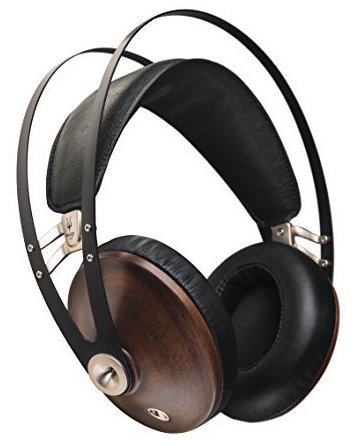 Category: Dynamic / Closed-Back
Category: Dynamic / Closed-Back
Impedance: 32Ω
Sensitivity: 103dB
What We Like: Probably the most gorgeous affordable cans ever made.
What We Don’t: Won't satisfy highly-demanding audiophiles.
Other headphones may offer technically-more-accomplished sound, but none of them are quite as beautiful as the 99 Classics. Romanian maestro, Antonio Meze, has built a truly spectacular pair here, which are among the most beautiful audio objects we've ever seen. We regularly use our pair for pleasure listening - and when we, who live and breathe headphones and amps, use a piece of gear in our downtime, you know they're going to be good.
The detail, fit, and finish are extraordinary, and the wooden earcups are an absolute pleasure. The sound is balanced, precise, and elegant. And although the 99 Classics are not going to trouble the Elite, above, they are still a wonderful pair of cans - especially for the asking price. There's simply no other pair of high-end headphones that offer this much, for this little. The 99 Classics are genuinely special, and somehow still cheaper than mass-market headphones like the Beats by Dre Studio3 Wireless...Read our in-depth review
See the Meze Audio 99 Classics
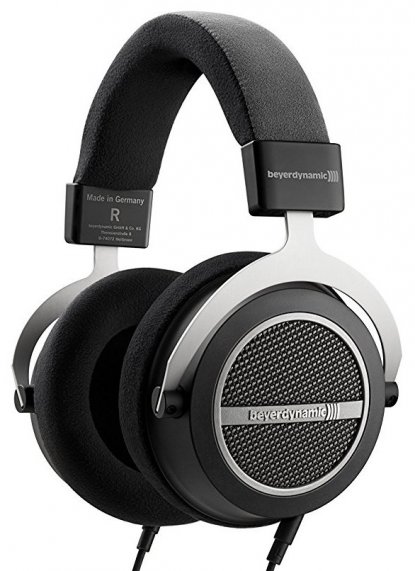 Category: Dynamic / Open-Back
Category: Dynamic / Open-Back
Impedance: 250Ω
Sensitivity: 102dB
What We Like: Clear and neutral sound, superlative comfort levels.
What We Don’t: A little dull, perhaps?
If this list were about comfort alone, then the Amiron Home headphones would be at the very top. They offer absolutely extraordinary comfort, thanks to the microvelour pads and band. And although they're not particularly light in weight, they feel virtually weightless when they're on your head. We even go so far as to call these some of the most comfortable headphones ever made.If you value comfort above all else, these should be your first choice. Comparing these to the Sennheiser HD600s: the HD600s offer better sound, but can't touch the Amiron Home for comfort levels.
Although the color scheme, styling, and accessories are a little dull, the sound doesn't match the construction. It's clear, sweet, and neutral, adhering to the Beyerdynamic house sound, presenting the material in the best possible light without ever giving undue coloration. If you like your music precise and clean, then these will make you very happy. We think they're offered for a reasonable price, too, especially in a market where there are plenty of far more expensive headphones that don't justify their pricetag. With the Amiron Home, you know exactly what you're getting for your money. Although to this day, we're still not sure what Amiron means. If Bluetooth is your thing, there's also a wireless version now - even if they're a little too big to be naturally portable…Read our in-depth review
See the Beyerdynamic Amiron Home
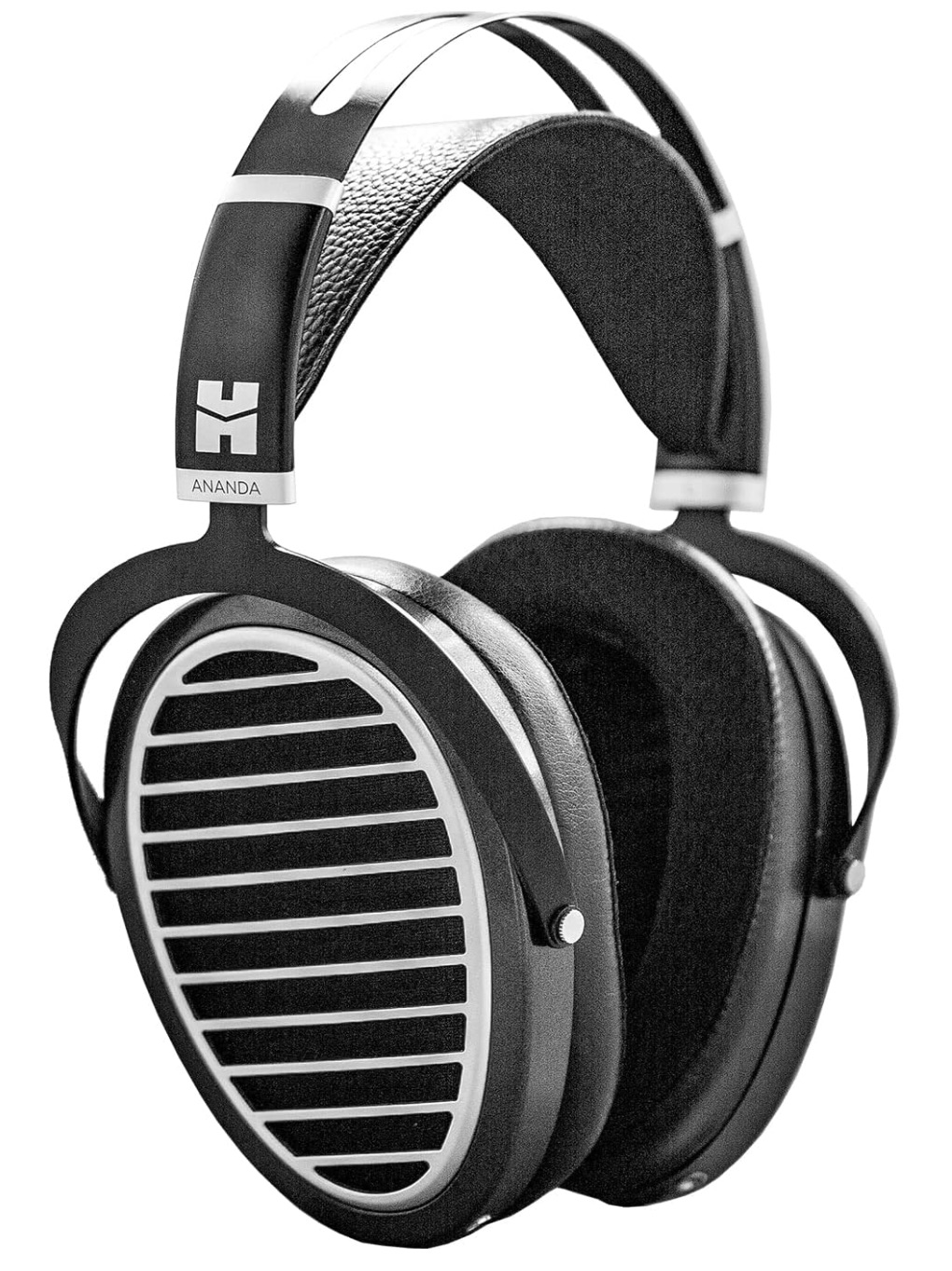 Category: Planar Magnetic / Open-Back
Category: Planar Magnetic / Open-Back
Impedance: 18Ω
Sensitivity: 93.5dB
What We Like: The Deva is one the first truly portable high-end planar magnetic headphones.
What We Don't: The large size may put some people off.
On the face of it, the HiFiMAN Ananda are weird as hell. They look like a standard pair of planar headphones, with the typical oversized cups and open-back design. But included in the package is a Bluetooth adaptor that connects to the 3.5mm output on the left cup, and which transmits a full range of high-end codecs including aptX HD. The DEVA are the first pair of truly wireless over-ear planars, and while they might seem weird, they work very well indeed. The sound is superb, and despite their size, they weigh only 13.5 ounces. That’s only a little heavier than the $3,995 Abyss Diana Phi, which require a headphone amp to run and would probably explode if you tried to make them wireless.
As good as the HiFiMAN Ananda are, there’s no denying that they are large. Portable headphones need to be functional as well as light, and the oversized housing means you won’t be hanging these around your neck or folding them up. A pair of in-ear headphones like the Noble Audio Khan may be a better option, providing high-end sound with a smaller footprint. We’ll also note that the open-back design means a lot of sound leakage, which isn’t ideal for portable headphones that might see use on, say, public transport.
See the HiFiMAN Ananda
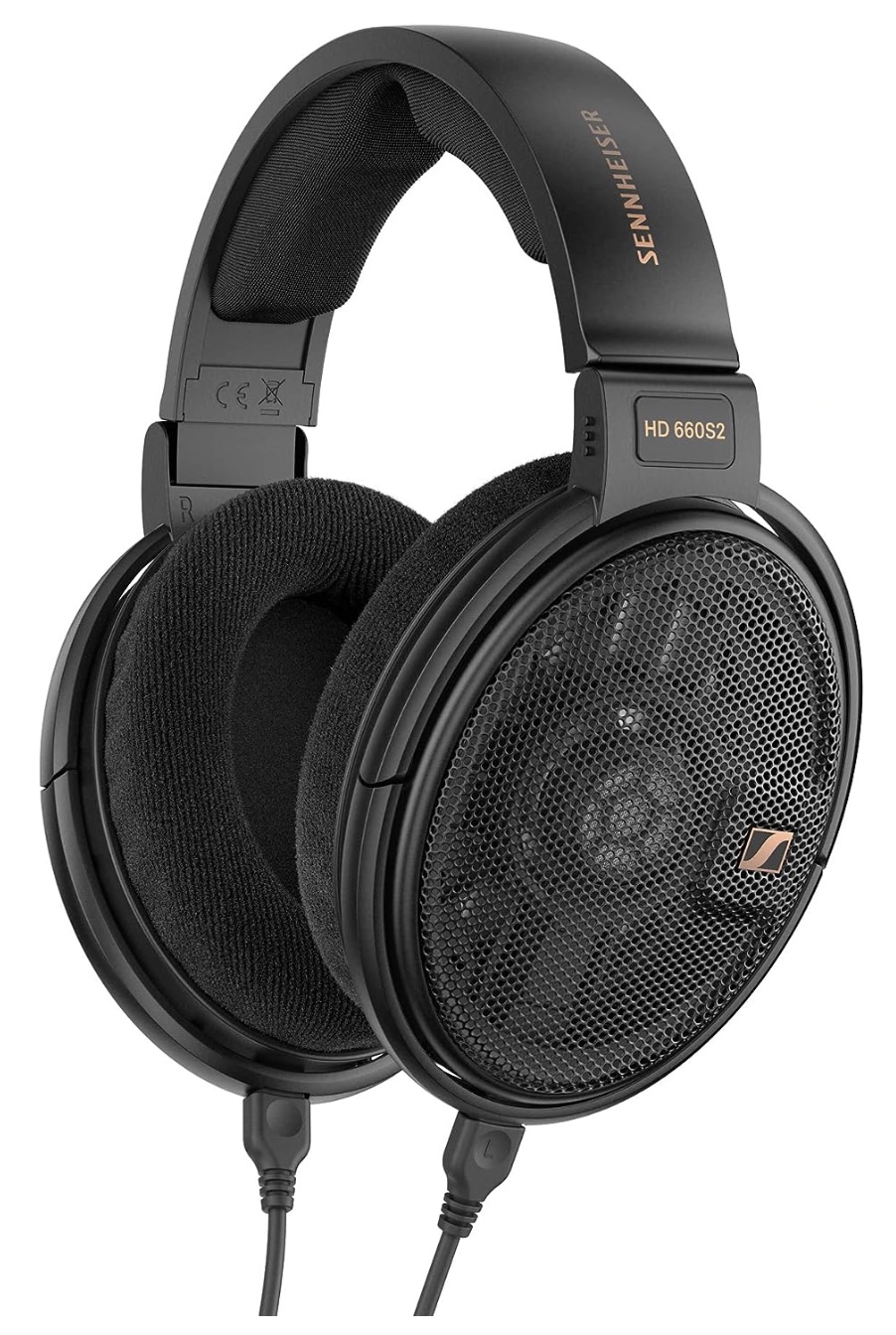 Category: Dynamic / Open-Back
Category: Dynamic / Open-Back
Impedance: 300Ω
Sensitivity: 97dB
What We Like: Sound that’s stood the test of time.
What We Don’t: You'll want need a decent amp to drive them.
You may very reasonably ask why we're putting a headphone line is almost twenty years old on this list. We wouldn't do so if we didn't have a damn good reason. And that reason is simple: the HD 660s are as good today as they were when they were released. Other models have been replaced or superseded with new technology and better driver tuning, but these are like the Illmatic of headphones. They're lightning in a bottle, and haven't been bettered since. Even today, this model a firm favorite among audiophiles, and we'd be crazy not to include it here.
While they're not going to beat the precision or depth of the models topping our list, the HD 660s still go toe-to-toe with headphones that cost twice as much, like the Beyerdynamic Amiron Home, above. They are renowned for being able to respond well to a huge range of amplifiers – which you will definitely need, due to their high impedance – and for their ability to accurately translate sound. They're far from the most current model, and you should expect their construction to be a little barebones and unsophisticated, but match these with a Schiit stack (a Modi DAC and Magni amp) and you'll be witness to one of the great pairings in audio.
See the Sennheiser HD 660
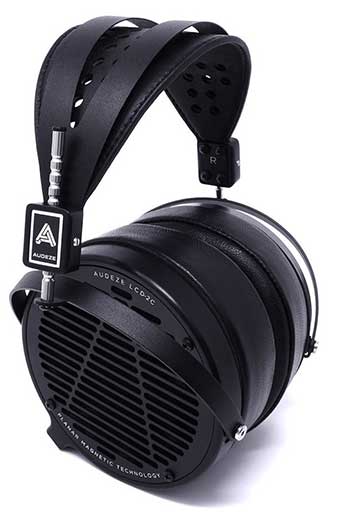 Category: Planar Magnetic / Open-Back
Category: Planar Magnetic / Open-Back
Impedance: 70Ω
Sensitivity: 101dB
What We Like: Delivers LCD2 sound at an unbelievable price point.
What We Don't: Quite old now, height adjustment brackets and comfort aren't as good as they should be.
We awarded the AUDEZE LCD-2s an Editor's Choice award when we reviewed them: they take the original LCD-2's rich bass and unbelievable depth, and wrap it in a wallet-friendly package. Sure, you lose the wood cups and the hard travel case, but who cares? These are absolutely out of this world.
So why aren't the LCD-2s higher up? They were previously in the top ten, but they're quite old now, and we've encountered some issues with availability. Also, we do wish that AUDEZE had fixed the clunky height brackets, and we found the headphones less comfortable than they should be. However, the LCD-2s remain some of the best headphones we've ever tested, and they still manage to compete with newer models in the $1,000-and-up range. While we love models from Focal and HiFiMAN, we'd stack the LCD-2 up against them any day...Read our in-depth review
See the AUDEZE LCD-2
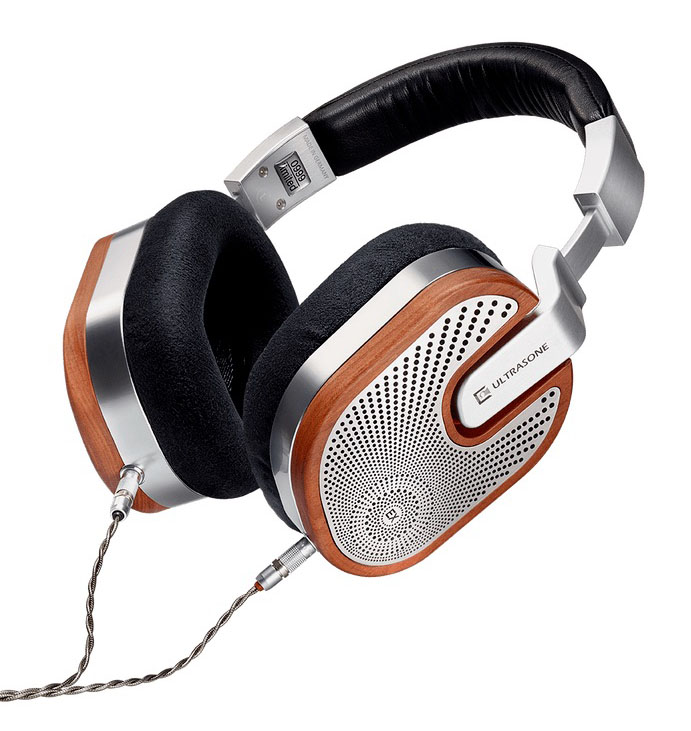 Category: Dynamic / Closed-Back
Category: Dynamic / Closed-Back
Impedance: 40Ω
Sensitivity: 96dB
What We Like: Exceptional detail and realism, particularly in the mids.
What We Don’t: Huge competition make these headphones a tough sell.
Germany’s ULTRASONE Have largely fallen out of the headphones conversation in recent years, surpassed by companies like Focal and Meze. We recently got to hear the 15 line, and we think they are absolutely worth considering if you plan to drop big money on a pair of headphones. This is down to how they present the midrange, which is some of the best presentation we’ve heard. Piano, voice, and guitars are effortlessly clean and clear, and the offset drivers help deliver a stunning soundstage too. These flagship headphones are ideal for those who like classical vocal music.
The biggest problem with the ULTRASONE 15 is that they struggle to compete with the big names. There is absolutely no way we would recommend them over the Meze Elite, for example, which are superior in every way. Ditto for the Focal Stellia. Hell, the Focal Utopia are only a few hundred dollars more, and they smoke the ULTRASONEs. The high end headphone market has ballooned in recent years, and having listened to the Edition 15 Veritas, we can see why the company got left behind— even while acknowledging that these are an excellent pair of headphones. We think they belong on the list because of the exceptional way they treat the mids, but you’ll need to think carefully before you buy. There are definitely better options available, and less expensive ones.
See the ULTRASONE 15
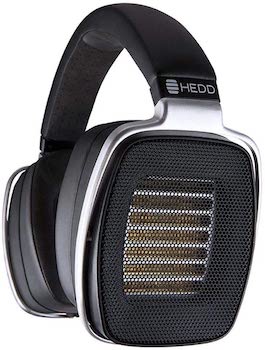 Category: Air Motion Transformer / Open-Back
Category: Air Motion Transformer / Open-Back
Impedance: 42Ω
Sensitivity: 87dB
What We Like: The sound quality is tremendous, and these headphones do something genuinely different with their tech.
What We Don't: The HEDDphones are absolutely enormous.
HEDD Audio are an esteemed speaker manufacturer from Europe, and the HEDDphones are their first attempt at a pair of cans. These aren’t planar magnetic or dynamic—Hedd have done something truly different here. The drivers are Air Motion Transformers: an accordion-like diaphragm with a huge surface area. AMTs are common in speakers but unheard of in headphones, which makes the HEDDPhones truly unique. And the sound…dear Lord. It’s not quite as clean as the sound of the Focal Utopias, but it’s up there, and for a significantly lower price. The soundstage, in particular, is worth mentioning—it seems to go on for miles.
All of this technology comes at a cost, however. There’s no getting around the fact that the HEDDPhones are gigantic. Not only do they have enormous ear cups, but they weigh significantly more than any other pair of headphones here—over one and a half pounds. The squashy pads are comfy to wear for long periods, but you’ll have to be comfortable with the extra weight. If you want a lighter pair of headphones in the same price range, take a look at the excellent Dan Clark Audio Ether 2 below.
See the Hedd Audio HEDDphone
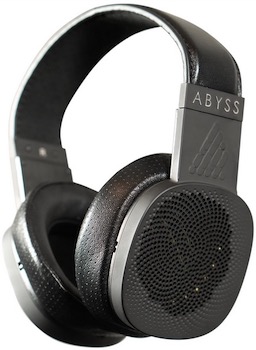 Category: Planar Magnetic / Open-Back
Category: Planar Magnetic / Open-Back
Impedance: 40Ω
Sensitivity: 91dB
What We Like: Genuinely improves on its predecessor.
What We Don't: Sensitivity is a little low, headband feels strange.
The newest version of the landmark Abyss Diana MR headphones largely keeps what made previous models so attractive. There’s that love it or leave it design, the airy and natural sound quality, and the sense that you’re listening to something really unique. The improvements here— and we should point out that there’s actually been a price decrease here— are in a lighter frame, thinner pads, and driver optimization. The Dianas remain among the best high-end planar magnetic headphones you can buy.
There are a few downsides to the Abyss Diana MR that sneak over from the previous edition. Despite tweaks, we still think the headband feels a little odd, and sometimes uncomfortable. The sensitivity of the headphones remains low, so they are not ideal for those who seek huge volume. But if you can get past those issues, you’ll find a pair of genuinely brilliant planar headphones.
See the Abyss Diana MR
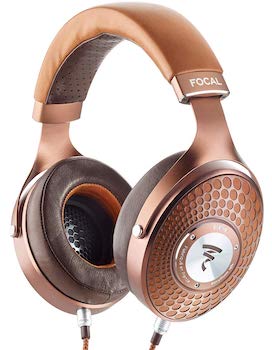 Category: Dynamic / Closed-Back
Category: Dynamic / Closed-Back
Impedance: 35Ω
Sensitivity: 106dB
What We Like: Stupendous sound, luxurious build.
What We Don't: Color choice may turn some people off.
The Stellia is Focal's closed-back flagship: an absolute beast of a headphone that is kept off the top spot only because there are so many other extraordinary contenders. Focal have hit the headphones market like a meteor over the past few years, and they have yet to put out a model we haven't loved. Their open-back Clear previously occupied this spot, but we think it's time to replace it with the Stellia. They are much better headphones, with superlative, rich sound quality and outstanding build. Think buttery leather, and lots of it. We first encountered them at CanJam NYC, and subsequently scored a pair to test in-office. They're gorgeous.
However, they aren't the best closed-back headphones out there. The ZMF headphones, above, do a better job at a lower price. The Stellia may have a friendly impedance (35 ohms), meaning you can drive them from your smartphone - but at just under $3,000, you may not want to take them out and about. And as much as we love the leather, we aren't sure about the 'chocolate' color offering…
See the Focal Stellia
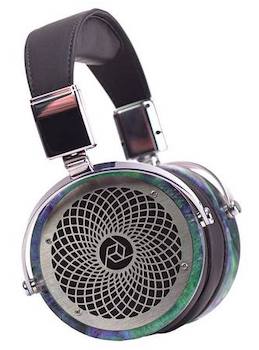 Category: Planar Magnetic / Open-Back
Category: Planar Magnetic / Open-Back
Impedance: 29Ω
Sensitivity: Unavailable
What We Like: Stellar looks, solid sound.
What We Don’t: Weight may prove problematic, frequently sold out.
The Rosson Audio RAD-0 is one of two handmade headphones on this list, the second being the outstanding ZMF Vérité Closed. And much like the ZMF cans, the RAD-0 have a distinctive look. In this case, it’s provided by rainbow-colored housing surrounding the Rosson logo, which is etched in metal. They are easily some of the best looking headphones we’ve ever seen, and the sound is ridiculously good. Unlike similar large open-backs – we’re thinking of the HiFiMan DEVA – the sound is balanced and clean, without being particularly dark. The RAD-0 are easily one of the best sounding headphones on this list.
However, they are also among the heaviest. While they are built well, and feel comfortable, they weigh almost one and a half pounds. That might prove to be difficult if you listen for long periods of time. You may also struggle to actually purchase them. Each model is handmade, and right now, all the options on the website are sold out. Alex Rosson told us that he plans to keep production small, so you may have to wait a while before buying a pair.
See the Rosson Audio RAD-0
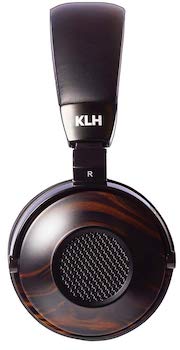 Category: Dynamic / Open-Back
Category: Dynamic / Open-Back
Impedance: 32Ω
Sensitivity: 97dB
What We Like: Beautiful design, attractive price.
What We Don’t: Slightly too bass-heavy.
You don’t have to spend thousands of dollars to get a great pair of high-end headphones. Instead, you could spend a mere $300 on a pair of KLH Ultimate Ones. KLH are traditionally a speaker company, and we were as surprised as anybody to see them release a pair of headphones. Fortunately, they know what they are doing. Every aspect from their beautiful design, with a lovely wooden finish that recalls the ZMF Vérité Closed, to their solid sound quality, the KLH Ultimate Ones are top notch. They feel luxurious and premium, as if they should cost far more than they do.
One aspect to mention about the Ultimate Ones is that they offer a warm, dark sound, meaning that the bass dominates above all else. We believe it sounds great - we like a bit of bass - but the audio might not be for everyone. This particular sound signature may turn off those looking for a more balanced or neutral presentation. If that’s you, we recommend the Sennheiser HD600s, which are only slightly more expensive.
See the KLH Ultimate One
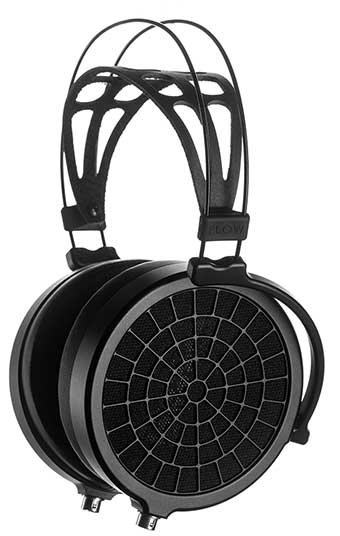 Category: Planar Magnetic / Open-Back
Category: Planar Magnetic / Open-Back
Impedance: 16Ω
Sensitivity: Unavailable
What We Like: Typically stellar Clark sound.
What We Don't: Limited specs, curious design.
The Ether 2, designed by Dan Clark Audio, absolutely crush it. They're light, incredibly easy to drive (16 ohms impedance), and deliver fantastic sound quality. Clark never sits still for long, and among the many headphones he's put out, we think these are real keepers.
We aren't wild about the design of the Ether 2, which is definitely an acquired taste. There's also a strange lack of specs available, like driver size and sensitivity. Clark's reasoning is that 'The industry has no standards for measuring or publishing results and many published specs wildly overstate the headphone's potential. We prefer not to play the "spec game" for this reason.' Which is fine, we suppose, but it doesn't offer a solution. And although we understand where Clark is coming from, we'd like to have known the specs anyway - perhaps with a breakdown of the measurements and benchmarks he uses. By the way, Clark has just released his new Aeon 2 model - we haven't had a chance to try it yet, but we fully expect it to unseat the Ether 2. It's under $1,000, and is getting a ton of hype, so you may want to wait if you plan on buying...
See the Dan Clark Audio Ether 2
| Headphones | Price | Impedance | Sensitivity | Drivers | Type | Weight |
|---|---|---|---|---|---|---|
| Focal Utopia | $4,999 | 80Ω | 104dB | 40mm | Dynamic | 1 lb |
| Meze Audio Elite | $4,000 | 31.6Ω | 100dB | 102mm | Hybrid | 15.1 oz. |
| ZMF Vérité Closed | $2,500 | 300Ω | Unavailable | 100mm | Dynamic | 1 lb |
| Noble Audio Khan | $2,399 | Unavailable | Unavailable | Unavailable | Various | 10.7 oz. |
| Meze Audio 99 Classics | $231 | 32Ω | 103dB | 40mm | Dynamic | 9.2 oz. |
| Beyerdynamic Amiron Home | $399 | 250Ω | 102dB | Unavailable | Dynamic | 12 oz. |
| HiFiMAN Ananda | $350 | 18Ω | 93.5dB | Unavailable | Planar | 12.7 oz. |
| Sennheiser HD 660 | $499 | 300Ω | 97db | 40mm | Dynamic | 9.2 oz. |
| AUDEZE LCD-2 | $799 | 70Ω | 101dB | 106mm | Planar | 1.1 lbs. |
| ULTRASONE 15 | $2,999 | 40Ω | 96dB | Unavailable | Dynamic | 11.3oz |
| HEDD Audio HEDDphone | $1,899 | 42Ω | 87dB | Unavailable | AMT | 1.58 lbs |
| Abyss Diana MR | $2,995 | 40Ω | 91dB | 63mm | Planar | 11.64oz |
| Focal Stellia | $2,795 | 35Ω | 106dB | 40mm | Dynamic | 15.4 oz. |
| Rosson Audio RAD-0 | $2,600 | 29Ω | Unavailable | 66mm | Planar | 1.4 lbs |
| KLH Ultimate One | $300 | 32Ω | 97dB | 50mm | Dynamic | 12 oz. |
| Dan Clark Audio Ether 2 | $2,199 | 16Ω | Unavailable | Unavailable | Planar | 10.2 oz. |
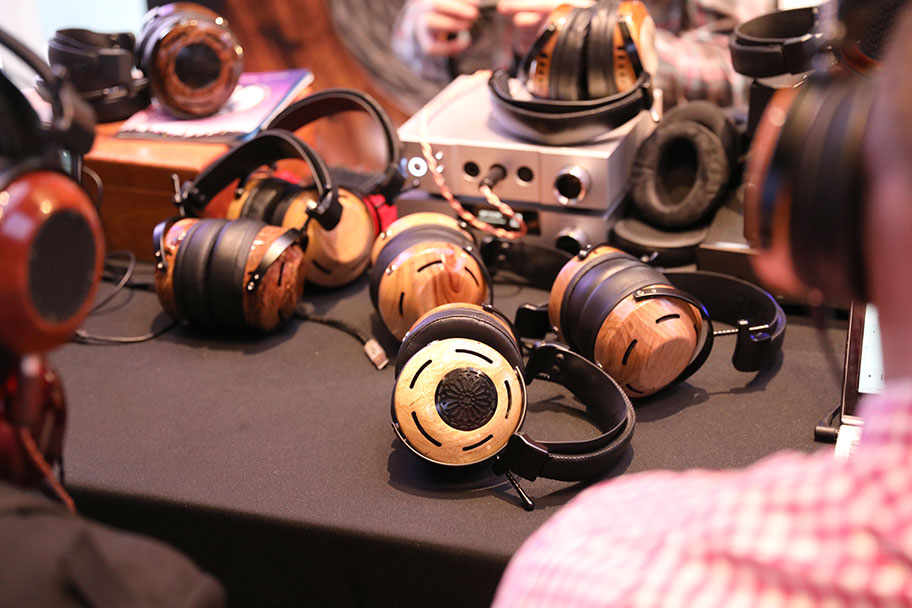
If you’re about to invest in a pair of high-end headphones, then it might be worth knowing the key pros and cons for each of the three main types. If you already know your headphones, you can probably skip this section. These classifications essentially describe the construction of the headphone. Over-ears fully enclose the ear; on-ears sit on top of it, leaving the side exposed; and in-ears are much smaller units that slot directly into the ear canal. They all have their own advantages and disadvantages. Over-ears typically provide larger drivers and better sound quality, but can be heavy and bulky, and aren’t really suitable if you’re claustrophobic. On-ears compromise a little on the sound quality (and you won’t find any on the list above, although you will in our list of the best overall headphones) but tend to be lighter and more portable. Finally, in-ears are the lightest of all, but can be an acquired taste due to the fact that they are often uncomfortable to use for long periods. They don’t, however, compromise on sound quality.
The more committed to audio quality you are, the more likely you are to go for a big pair of over-ears that you can listen to in one place (preferably with a good amp). Portability means you’d be going for a pair of in-ears or on-ears. Really, it’s down to what you find comfortable, so if you can, try and audition a few types before you buy. By the way, there’s a myth that over-ears are intrinsically superior to on-ear or earbuds. Wrong. Plenty of those models offer superb sound quality, and there are plenty of reasons to choose them. If you wear glasses, for example, you might find that over-ears are uncomfortable to wear for long periods of time. In this case, on-ears may be a better option.
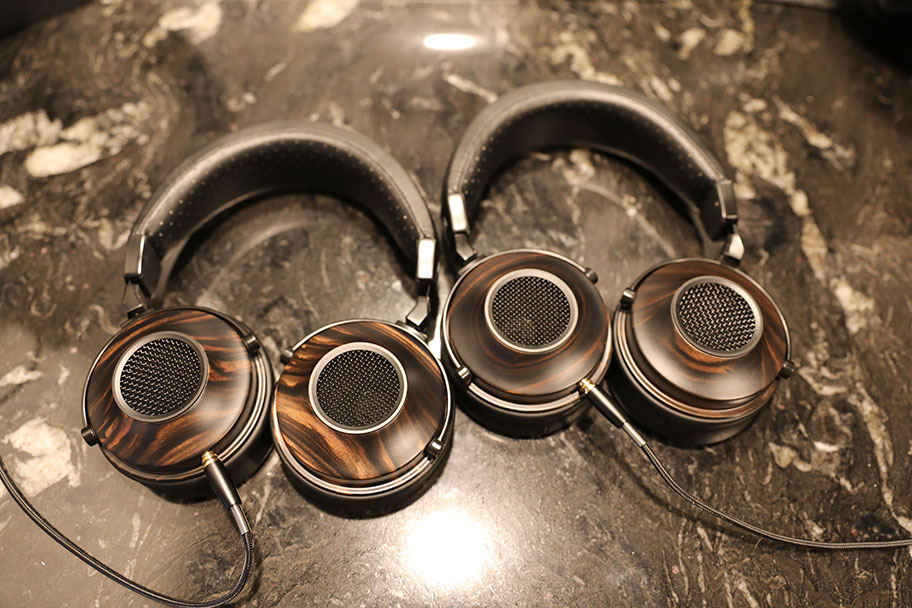
The idea of closed-back and open-back headphones can be confusing, until you know what to look for. It's something that can make a major difference in sound quality - so it's worth knowing about. The term refers to the outer part of each can. Closed-backs (sometimes referred to as sealed headphones) are completely closed-off, with the inner workings of the headphones hidden away. Open-backs, on the other hand, leave it exposed, usually protected behind a rigid mesh grille. The best closed-back headphones on our list are unquestionably the ZMF Vérité Closed, which cost $2,499.
As we said, this has to do with sound. Open-backs sound better, as they allow air to pass through, and interact with the audio produced by the drivers. This makes the headphones sound more open and natural. They also have the benefit of looking extremely cool. Closed-backs are the opposite, with the drivers and electronics hidden away, and they don't sound nearly as good.
Why not go for open-backs as a matter of principle? Bleed. When applied to cans, this word refers to how much sound leaks out when music is playing, and open-backs leak a lot. Even at low volumes, anyone around you will be able to clearly hear what you're listening to, and they probably won't appreciate the enhanced audio quality. If you do the bulk of your music listening alone, then by all means, go for this. But if you plan on using your cans in company, then go for a pair of closed-back ones.
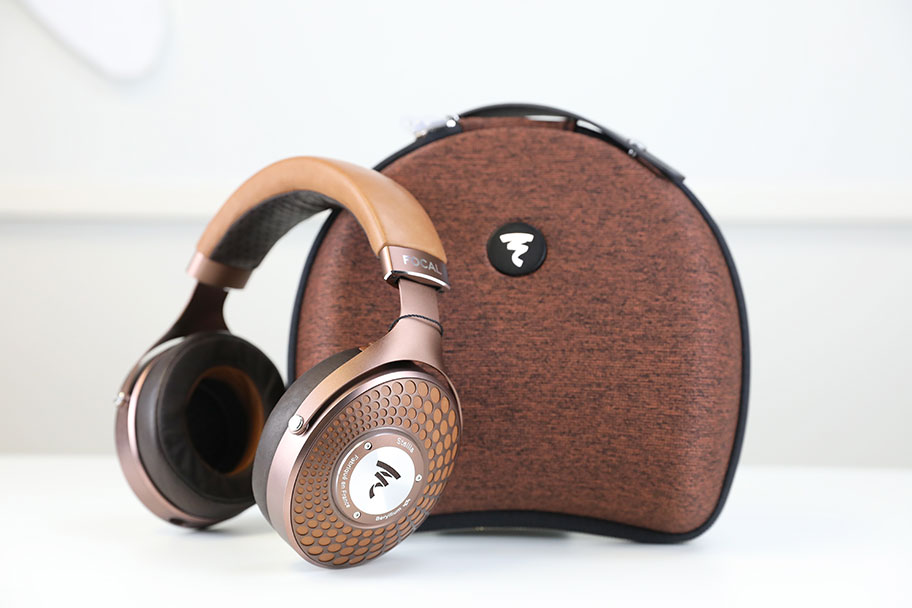
We put a lot of emphasis on impedance here at TMS – and with good reason. In terms of headphones, it's probably the single most important spec there is. It can tell you how much power you need to drive a headphone, and how accurate that headphone's sound is likely to be.
Impedance refers to the electrical resistance of the headphones. It's not just about how much voltage and current they can take, but how much they need to operate properly. We could get deeply technical here, but the upshot is this: the higher the impedance, the more power you will need to drive the cans. Any pair with an impedance of less than 32 ohms (Ω) can be taken to an acceptable level without an amp. 32-100 ohms is a little bit of a grey area – you'll probably be able to run cans in this range off mobile devices, but the result won't be quite as good. Over 100 ohms? Yeah, you're going to need a separate amp. These are just not going to work off your smartphone. Low impedance isn't bad, by the way - far from it. The HiFiMAN Ananda, an impeccable pair, have a very low impedance of around 18 ohms, meaning they can be driven off a phone, or even a small audio player.
You might also ask why you would go for a high impedance anyway? If everything else is equal, why settle yourself with extra power requirements? Because higher impedance means the headphones are more able to accurately reproduce the sound without artefacts. Usually, a pair of headphones with a high impedance figure means that you're in for a fun time.
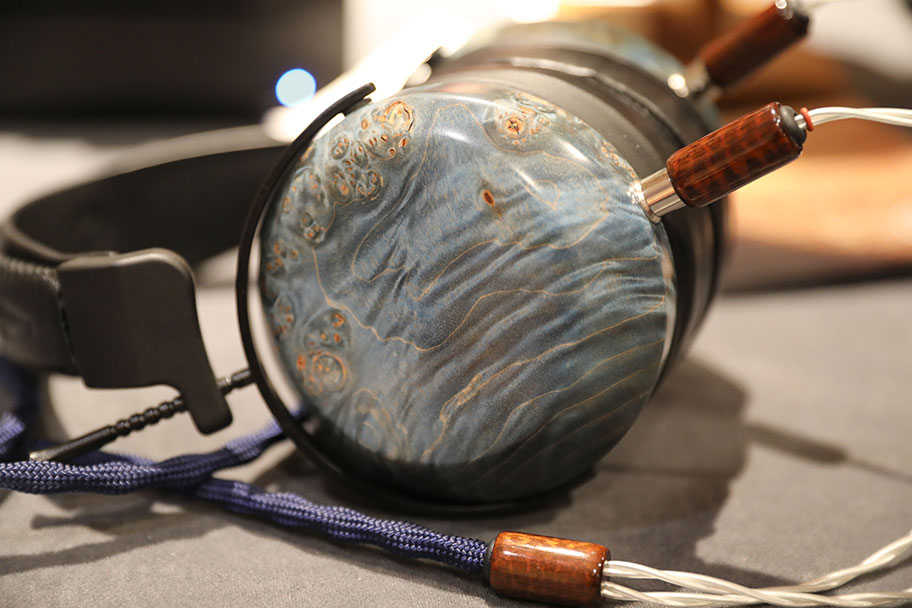
If impedance is the most important thing to know about a pair of headphones, then sensitivity comes as a close second. It's not absolutely essential to know it, but it can give you an idea of just how loud the headphones are likely to be. It's a measure of how efficiently the drivers in the cans make sound – or, more prosaically, how loud they will get from a constant source of one milliwatt. The higher the sensitivity (which is measured in decibels, or dB), the more likely the cans will be to respond to a larger variety of players or amps. Ones with lower sensitivity need slightly more power, but you can drive them at higher volumes for longer, whereas those with high sensitivity prefer more moderate volumes. Example: most of the headphones on this list have a sensitivity above 95dB. But the $2,995 Abyss Diana MR hovers at around 91dB – and its predecessor, the AB-1266 Phi, was even lower, at around 86dB.
That means that at the same amount of power, the Diana won't be quite as loud as other models. Again, this isn't necessarily a huge problem, especially with headphones, but it's worth bearing in mind. By the way, we've only touched on topics like impedance and sensitivity here. We go into a lot more depth, with many more practical examples (and a nifty explainer video!) In our full explainer of headphone specs.
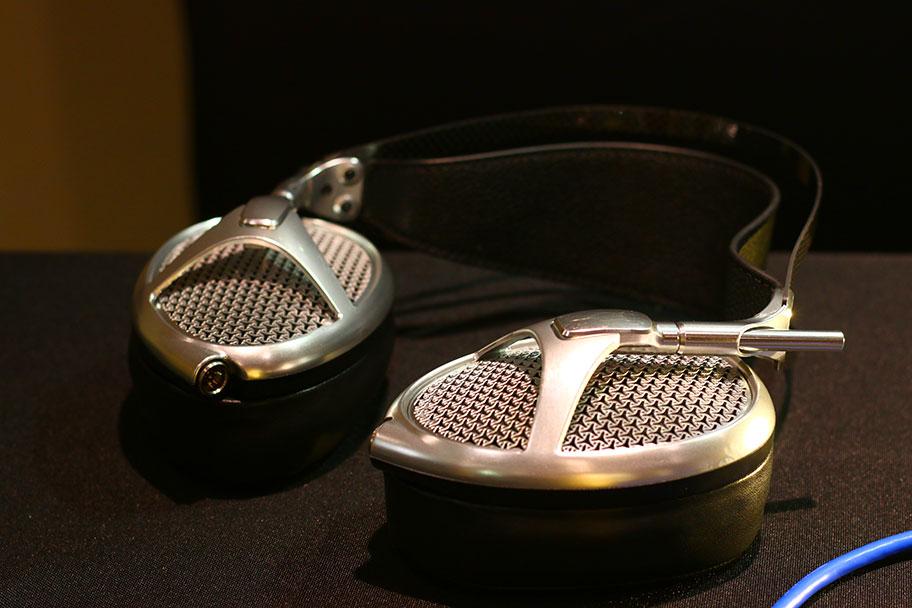
When you're looking at the models in the list above, you're going to see a few terms continually popping up. Among the most common are things like dynamic driver, magnetic planar, and electrostatic. While understanding these is a little less important than understanding things like impedance and sensitivity, they're still worth breaking down. They refer to the method a pair of headphones uses for getting sound to your ears, and we're going to lay out the three main ones as simply as possible.
Dynamic drivers are by far the most common – the kind of thing you'd find in most cans you can buy at the store. In these, sound is transmitted by a moving coil of very thin wire which reacts with a magnet, moving the speaker diaphragm and producing sound. It's a relatively inexpensive method, and in terms of sound quality, it's by far the least desirable. This does not – repeat, not – mean it is bad. The Focal Utopia are dynamic driver headphones, and they wipe the floor with just about everything else. But when compared with the other two types below, it's probably the most common type of driver.
Planar magnetic headphones are renowned for the delicacy of their sound. The HiFiMAN and AUDEZE models above, among others, use it. Instead of using a coil of wire, these models spread the magnetic force across the diaphragm. This requires stronger magnets, but produces infinitely better sound. You're also probably going to need a more powerful amplifier to get these working as they should be. They are usually, but not always, more expensive than standard dynamic driver headphones. Case in point: the amazing AUDEZE LCD-2 aren't quite as expensive as the dynamic-driver Utopias, but cost very little in comparison.
Electrostatic models are in a whole class of their own – and we elected to steer clear of them here, as they're overkill for just about everybody. They use an electrically-charged diaphragm, made of mylar, sitting between two conductive plates – one charged negatively, the other positively. The movement of the diaphragm produces the sound. Electrostatic cans are unwieldy, expensive, and hard to use, requiring specialised amps – even if they sound utterly glorious. We might not have featured them here but, if you're interested, manufacturers like Stax are still dominating the field.
You do also get balanced armatures. These are unique to in-ears, and often contain multiple drivers, consisting of coils, suspended between magnets and wrapped around metal armatures. An armature, by the way, is a metal core that connects the magnets.
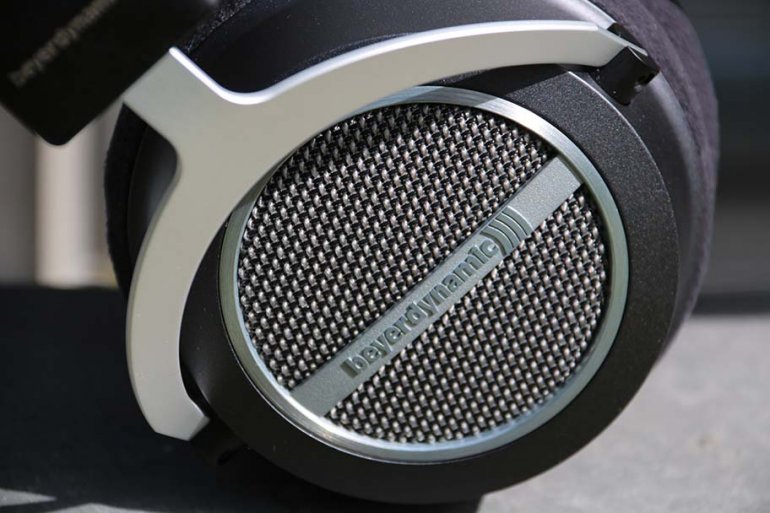
Drivers are the part of the cans that produce sound. Generally, you have two of them, one left and one right, although some headphones do have more - the 1More Triple Driver Over-Ear headphones come to mind. Think of the drivers as tiny little motors that convert the audio signal into something you can actually hear, using a combination of diaphragms, magnets and coils to vibrate, and produce sound.
Drivers are measured in millimeters (we're not entirely sure why, when so many other sound equipment measurements are in inches). The actual figure we give is a little misleading - it's arrived at by using a very complicated mathematical formula that takes into account the overall surface area of the driver, and at this point, we're just going to tell you that a 50mm driver is bigger than a 40mm driver. By the way, don't be too freaked out if a manufacturer doesn't give the size of the driver – it's far less important than the impedance and sensitivity. The Noble Audio Khan, for example, have no driver size listed – and we don't care that much, because it sounds awesome.
As a general rule, the larger the driver, the more powerful the sound. That being said: it doesn't necessarily mean better sound. Not always. It's far more important to note what the driver is made out of, which will have are far more dramatic effect than a few extra millimeters. These materials may include things like aluminum or beryllium, each of which have their own distinct sonic characteristics. Don't, in other words, be fooled with the manufacturer trumpets a huge driver size. In practical terms, it may mean very little.
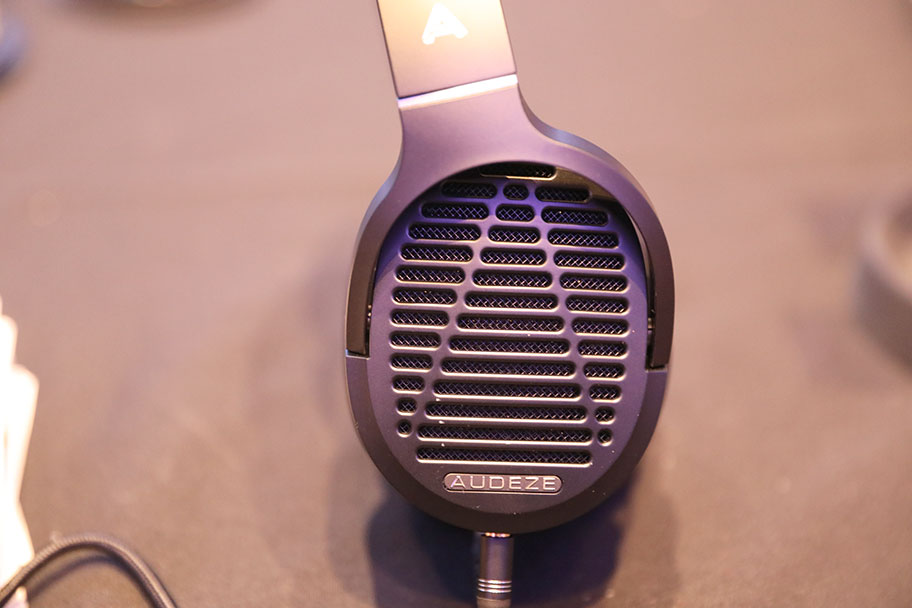
Not always - but it sure helps. An amplifier - and you can get dedicated amplifiers that will do exactly the job you need, including portable ones - offloads the task of increasing the power of the audio to a separate box. Whether you go for a desktop one or a portable one, they can vastly change your audio experience. Any headphones with an impedance of over 100Ω are almost certainly going to need a separate amp. And even if the impedance is much less, virtually any pair of headphones will sound stratospherically better when you plug them into one.
But how do you match them? What amp do you go for? Simply make sure that the output impedance of the amp is 1/8th or less of the headphone impedance. Follow that, and you'll get absolutely perfect audio quality for that particular pair of counts. For example, let's say you splash out and buy the Abyss Diana MR, because you won the lottery or something. Those have an impedance of 40Ω. That means your amp needs an output impedance of no more than 5Ω, which is very achievable for most models.
When you're picking an amp, we recommend spending at least around the same as what your cans cost. Also: check if the manufacturer of the headphones makes an amp, which will almost always be matched perfectly with their companion cans. Ultimately, they're built for each other - and it'll be reflected in the sound quality. If you want a full guide to getting the best out of your headphones, you're in luck. We've got one right here on this site.
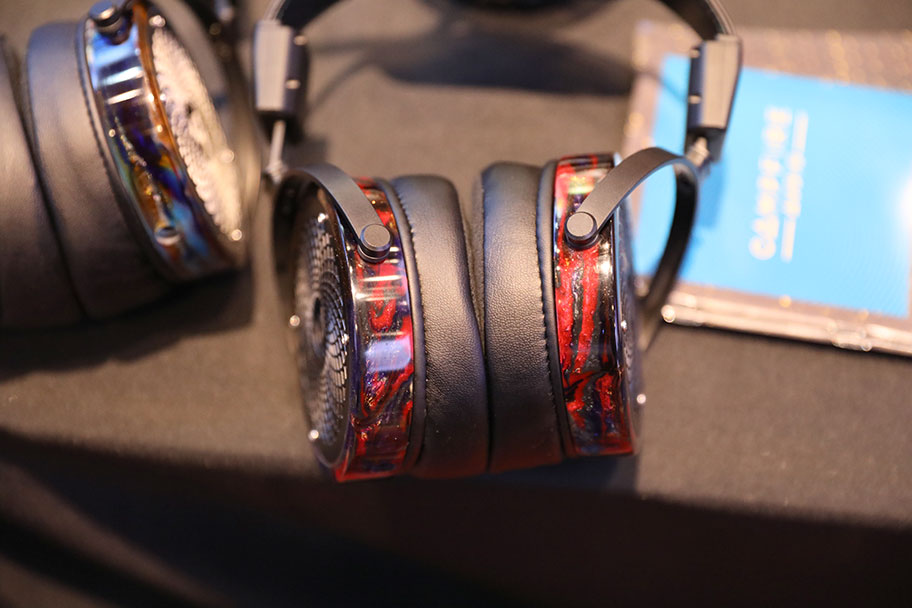
Frequency, at its simplest, refers to how high or low a sound is. Violins are high frequency, basslines are low. Frequency is measured in Hertz (Hz), and when you talk about anything over 1,000 Hz, you start referring to it as kiloHertz (kHz). So 1,000Hz is equal to 1kHz. And that's all the math we'll throw at you, promise. That low bass drum will have a low hertz measurement (Between 20-100Hz) while the wine glass noise will have a much higher one (around 17,000Hz). The human voice appears between 85-255Hz. Humans have a hearing range of between 20Hz-20kHz,
If a pair of headphones has a frequency response of 20Hz to 20kHz, it can comfortably produce any sound between those two values. The problem is, plenty of headphones advertise the fact that their frequency ranges are as wide as possible. This opinion is probably going to be quite unpopular among headphone designers, but we don't care: knowing that a headphone goes all the way up to 55kHz (for example) is absolutely useless, and if you were to base your buying decision on that, you'd be a moron. Any of the frequencies it produces above 20Hz will be inaudible to humans.
Really, it's a marketing gimmick; the manufacturers build models that certainly can go up this high, but you'll never get a chance to test them out by virtue of the fact that you'll never actually be able to hear it, even if you're a teenager. That's why we'd argue that frequency ranges are completely useless when you're deciding what to buy. There are people on this planet who can tell the difference between 5Hz and 6Hz, but we're pretty sure one is dead, and the other two are in insane asylums. It's not about how wide your cans can go: it's about what they do with the spectrum in between. By the way, this isn't just a problem with headphones; it's a problem with almost all audio equipment, including headphone amps.
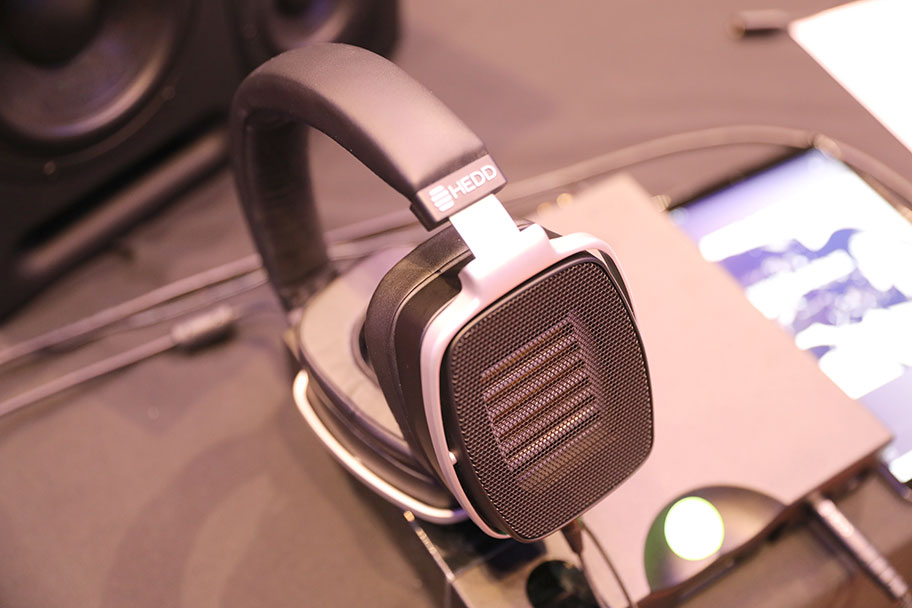
Headphones have one simple goal – and it's the same whether they are a pair of $4,000 monsters or a tinny set of iPhone earbuds. It's to block out the world around you, and pipe music into your ears. The more they do this, the better your experience will be. This aspect is known as isolation, and it's a measure of how effective a pair of headphones will be creating a seal around or in your ears. The tighter the seal, the less likely you are to be bothered by outside noise. And note that we use the word measure with caution. To our knowledge, there is no actual industry standard measurement for how much sound a pair of headphones blocks out, which is probably due to the large amount of human head and ear sizes in our species. It is, after all, quite difficult to get a standard human head! However, we can offer some general principles to help you judge how well a pair of headphones isolate your ears.
Generally speaking, in-ear headphones (like the Noble Audio Khan) have the best isolation properties, as they quite literally block the entire ear canal. Over-ear headphones are good, too, because they seal the entire ear off from the outside world - although if the headphones are open-back, you they may allow sounds from outside to penetrate. On-ear headphones are generally considered to have the worst isolation, because of the way they sit on the ear, which allows sound in. The softer the material of a pair of ear cups, the more likely it is to create a decent seal against your skull. Large cups will usually create a better seal the small ones. But again: everyone has a differently-shaped skull, and different-sized ears. And remember: isolation works both ways. Headphones that isolate effectively will mean that your co-workers won't know you are listening to Justin Bieber. You've been warned. By the way, if you truly want perfect isolation, it may be worth looking at a pair on in-ear monitors (IEMs).
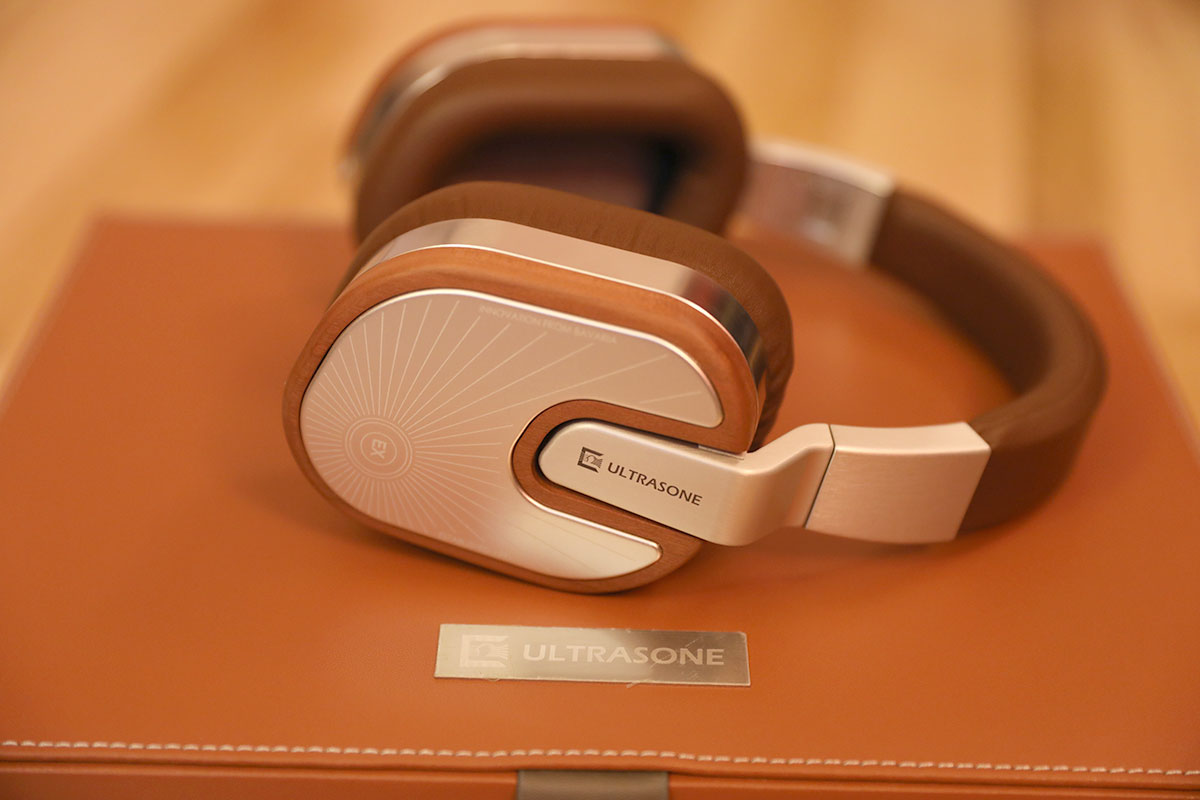
The whole point of high-end headphones is to get lost in the music. The end goal here is to have the headphones disappear, in the sense that you are no longer aware of them on your head. By necessity, this takes a little bit of time, and reaching this level of comfort and happiness is a lot easier if you have headphones that are light. It’s very hard to get lost in the music when your neck hurts and your skull aches.
High-end headphones tend to be a little heavier than their portable counterparts. The non-earbud picks above range from a relatively light 9.2 ounces for the Sennheiser HD 660 up to a hefty 22.4 ounces for the Rosson Audio RAD-0 . Quality components often weigh more, and the chances are that the pair of headphones you buy will end up having not only a sizeable build, but a dense one too. That’s not necessarily a problem—or not as much of one as you might think. Heavier they may be, but these headphones can often compensate through advanced headband and pad design, which can spread the weight more evenly. When you’re looking for a pair of headphones to buy, there are more important specs to look at than weight. It’s good to have in the back of your mind, but it’s less essential than you might think.
Having said that, it’s worth being aware if a pair of headphones is particularly heavy, or particularly light. The Hedd Audio HEDDphone is superb and comfortable to wear for long periods, but is amazingly heavy at 1.58 pounds. That’s definitely something to take into consideration before you buy. To help in the process, we’ve listed each headphone’s weight in the table above.
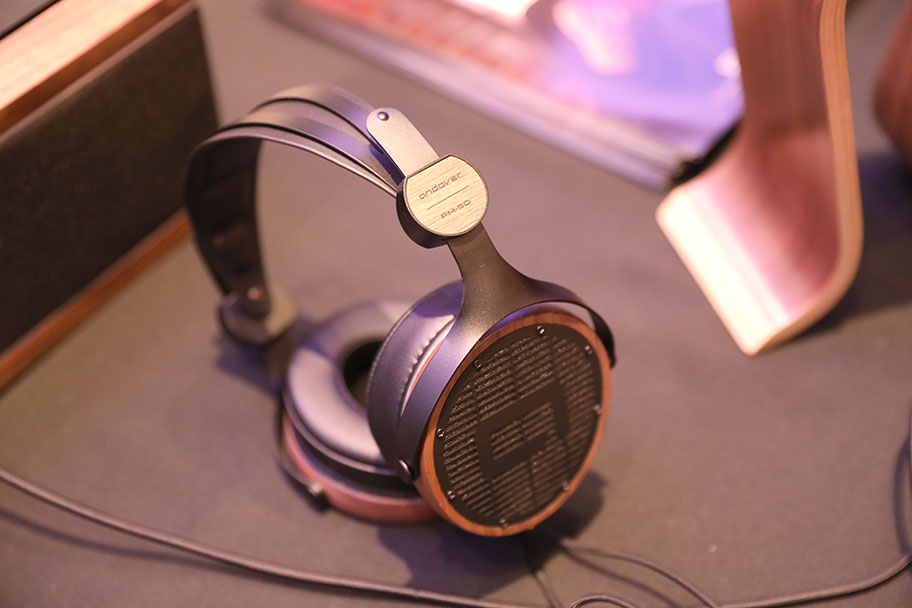
Not as simple a question to answer as you might think. On the surface of it, you appear to always get more for a high price tag. Better quality sound, better construction, luxurious accessories…start moving into the four-figure range, and this is what you can expect to see. As a general rule, it is true that higher prices will give you better experiences. But – and it's a big but – this isn't always the case, and the trick is to be able to spot value-for-money, and when a pair of headphones is punching out of its weight class.
To illustrate this, we offer two examples. The first is the AUDEZE LCD-2. They cost around $799, not even within sniffing distance of some of the prices of the other models on our list, and yet we ranked it in our top ten. The reason for this is that it offers overall value that is far in excess of some of the models below it. While it may not beat them in individual aspects like sound quality, it offers such a brilliant experience at such a good price that we think deserves to be in the upper echelon
Second example: the Focal Stellia. They costs almost significantly more than the LCD2C, but the latter are the ones we'd go for. Why? Because as we said in the list above, we don't feel that the Stellias do enough to justify their high price tag. They are great cans, they belong in this list…but they just don't do enough to push them into the upper reaches, or to beat out the ones above them. This is a case where spending more money won't guarantee you a better experience.
As always, we recommend choosing a pair of headphones that is right for you, rather than simply going for the most expensive pair you can afford. Check our in-depth reviews to find detailed thoughts on the models here, as well as plenty of others, including wireless headphones.
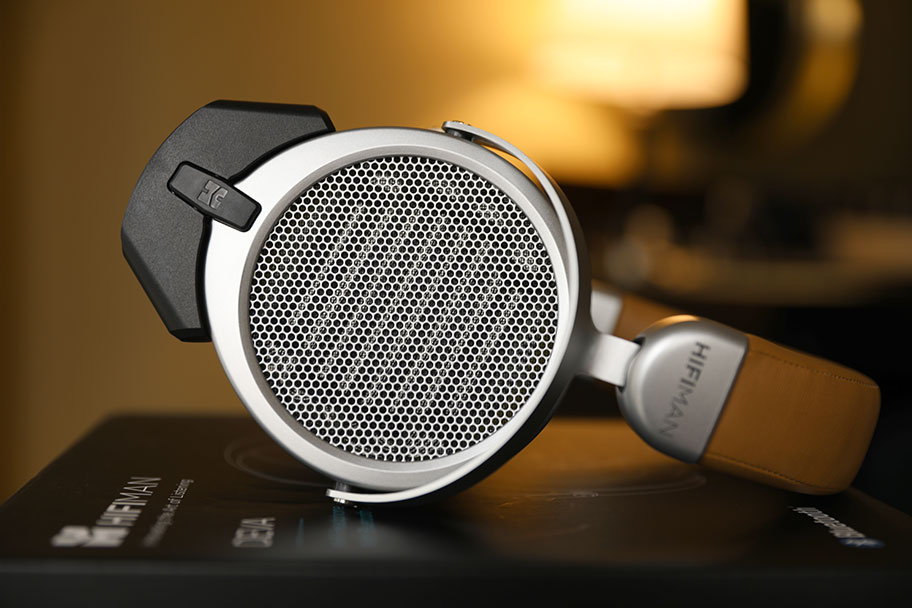
Short answer: yes. With apologies to hi-fi enthusiasts and those who adore two channel sound, there’s no question in our minds that if you wish to get the true essence of a piece of music with as little coloration as possible, you need to buy a pair of headphones.
The reason for this is simple. In a hi-fi setup, there are two things that impact your sound: your hi-fi system, and the room. In fact, we argue that in many cases, the room is the dominant feature. The sound interacts with the space as much as it does with you, and your impressions of that sound will be colored by any reflections. That’s not necessarily a bad thing, and if you enjoy the sound of your speakers in your chosen room, then more power to you. But it would be crazy to deny that the room plays a major role in how you perceive sound.
With headphones, that isn’t an issue. The space between the drivers and your ears is reduced to less than an inch, and is frequently a lot closer. While air will always interact with the sound (especially in the case of open-back headphones like the $499 Andover Audio PM-50) what you won’t get are the reflections. There are no walls, floor, or ceiling for the sound to bounce off. As a result, although you do sacrifice some of the soundstage and imaging present in two channel setups, what you get is a much closer sense of the recording actually sounds like.
Again: we want to stress that you need to do you. You need to decide which setup works for you, or whether you want to go for a combination of the two. But if you want to eliminate the room entirely, and get as close to the precision of the original recording as possible, then you need to pick up a set of headphones. There really isn’t an alternative. Sorry!